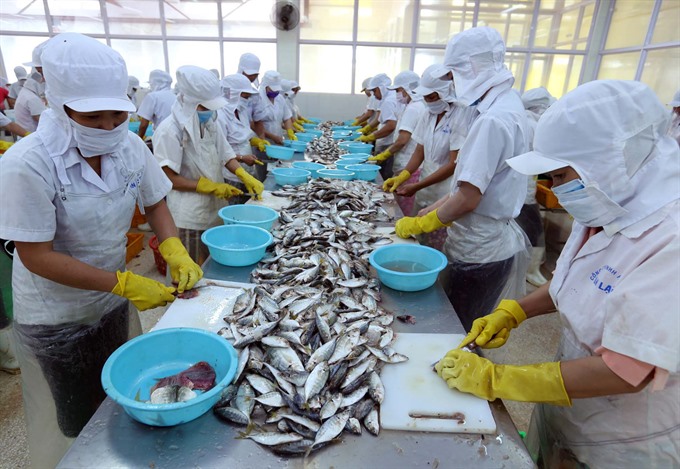 Economy
Economy

Many Vietnamese small-and-medium sized enterprises (SMEs) have not applied technology to their business and 45 per cent of the country’s firms have low or medium technology, while only two per cent of Vietnamese companies have high level technology.
 |
| Many Vietnamese small-and-medium sized enterprises (SMEs) have not applied technology to their business . — VNA/VNS Photo |
HÀ NỘI — Many Vietnamese small-and-medium sized enterprises (SMEs) have not applied technology to their business and 45 per cent of the country’s firms have low or medium technology, while only two per cent of Vietnamese companies have high level technology.
“The limit in applying technology in local businesses has made the country’s competitiveness lower,” said Phạm Tất Thắng, senior advisor of the Việt Nam Institute for Trade under the Ministry of Industry and Trade.
Thắng told a conference on developing Việt Nam’s trade in 2016-20 held in Hà Nội yesterday that amidst fierce competition, several SMEs had not paid attention to technology application and renewal. Meanwhile, domestic firms have faced challenges from foreign companies in the past few years.
“There will be more dissolved and bankrupt companies soon if local businesses do not change. With deeper integration into the world economy, SMEs should change their thoughts about doing businesses,” he added.
He said enterprises should establish co-operation with partners, local businesses and Vietnamese overseas and pay attention to human resources to improve their ability in international trading.
He also said that whether the Trans-Pacific Partnership (TPP) was signed or not, the TPP would still be a model for Vietnamese businesses to improve their competitiveness.
Phan Tố Uyên from the National Economics University said the small scale, weak management and technology and low competitiveness have been common among Vietnamese businesses.
Uyên provided figures from the Việt Nam Chamber of Commerce and Industry showing that only two per cent of the country’s firms were large while two per cent was medium and 96 per cent were SMEs.
“With limited resources and a shortage of management experience, vision and competitiveness strategies, Vietnamese companies have seen difficulties in joining global supply chains,” she said.
She suggested the Government create a favourable business environment to support businesses in lending, application of science and technology and participating in global supply chains.
Việt Nam has seen a remarkable increase in its exports while expanding markets and co-operation with many countries such as the US, Japan and EU.
Trần Thanh Hải, deputy head of the ministry’s Import-Export Department said in 2006-15, average export turnover was 17.5 per cent a year. The export turnover increased four times from US$39.8 billion in 2006 to $162 billion in 2015.
The export structure has changed by increasing the portion of processing products to account for 78 per cent of total export turnover while reducing that of fuel and minerals.
However, he said, the country’s exports have seen shortcomings as key products have been outsourced. Its agricultural products – one of Việt Nam’s strengths in exports have mostly been exported in raw materials with low added value. — VNS




